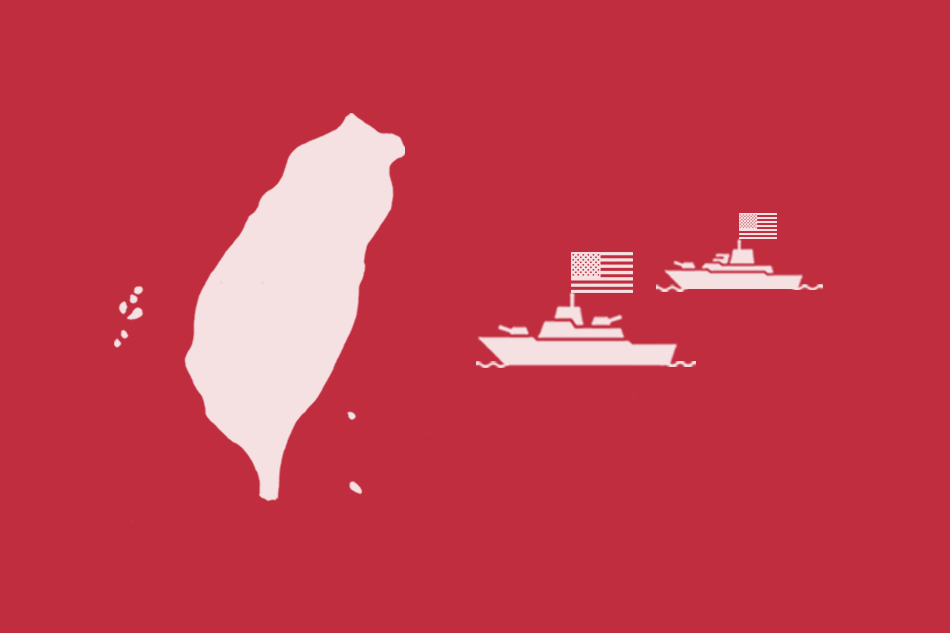The New Cold War is rapidly heating up, with severe consequences for people around the world. Our series, Briefings, provides the key facts on these matters of global concern.
In recent years, Taiwan has become a flashpoint for tensions between the United States and China. The seriousness of the situation was recently underscored on 21 December, when US and Chinese military aircraft came within three metres of each other over the South China Sea.
At the root of this simmering conflict are the countries’ diverging perspectives over Taiwan’s sovereignty. The Chinese position, known as the ‘One China’ principle, is firm: although the mainland and Taiwan have different political systems, they are part of the same country, with sovereignty residing in Beijing. Meanwhile, the US position on Taiwan is far less clear. Despite formally adopting the One China policy, the US maintains extensive ‘unofficial’ relations and military ties with Taiwan. In fact, under the Taiwan Relations Act of 1979, US law requires Washington to provide arms ‘of a defensive character’ to the island.
The US justifies its ongoing ties with Taiwan by claiming that they are necessary to uphold the island’s ‘democracy’ and ‘freedom’. But, how valid are these claims?
A Foothold for Influence
To understand the contemporary geopolitical significance of Taiwan, it is necessary to examine Cold War history. Prior to the Chinese Revolution of 1949, China was in the midst of a civil war between the communists and the nationalists, or Kuomintang (KMT) – the latter of which received billions of dollars in military and economic support from Washington. The revolution resulted in the establishment of the People’s Republic of China (PRC) on the mainland, while the defeated KMT forces fled to the island of Taiwan, which had returned to Chinese sovereignty four years earlier, in 1945, following fifty years of Japanese colonial rule. From Taipei, the KMT declared that they were the rightful government-in-exile of all of China under the name of the Republic of China (ROC) – originally founded in 1912 – thereby rejecting the legitimacy of the PRC.
The US military soon followed, establishing the United States Taiwan Defence Command in 1955, deploying nuclear weapons to the island, and occupying it with thousands of US troops until 1979. Far from protecting ‘democracy’ or ‘freedom’ in Taiwan, the US instead backed the KMT as it established a dictatorship, including a 38-year-long consecutive period of martial law from 1949–1987. During this time, known as the ‘White Terror’, Taiwanese authorities estimate that 140,000 to 200,000 people were imprisoned or tortured, and 3,000 to 4,000 were executed by the KMT. Washington accepted this brutal repression because Taiwan represented a useful foothold – located just 160 kilometres off the south-eastern coast of the Chinese mainland – that it used to pressure and isolate Beijing from the international community.
From 1949–1971, the US successfully manoeuvred to exclude the PRC from the United Nations by arguing that the ROC administration in Taiwan was the sole legitimate government of the entirety of China. It is important to note that, during this time, neither Taipei nor Washington contended that the island was separate from China, a narrative that is advanced today to allege Taiwan’s ‘independence’. However, these efforts were eventually defeated in 1971, when the UN General Assembly voted to oust the ROC and recognise the PRC as the only legitimate representative of China. Later that decade, in 1979, the US finally normalised relations with the PRC, adopted the One China policy, and ended its formal diplomatic relations with the ROC in Taiwan.
For Peace in Taiwan, US Interference Must End
Today, the international community has overwhelmingly adopted the One China policy, with only 13 of 193 UN member states recognising the ROC in Taiwan. However, due to the continued provocations of the US in alliance with separatist forces in Taiwan, the island remains a source of international tension and conflict.
The US maintains close military ties with Taiwan through arms sales, military training, advisors, and personnel on the island, as well as repeatedly sailing warships through the narrow Taiwan Strait that separates the island from the mainland. In 2022, Washington pledged $10 billion in military aid to Taiwan. Meanwhile, US congressional delegations regularly travel to Taipei, legitimising notions of separatism, such as a controversial visit by former US Speaker of the House of Representatives Nancy Pelosi in August 2022.
Would the US or any other Western country accept a situation where China provided military aid, stationed troops, and offered diplomatic support to separatist forces in part of its internationally recognised territory? The answer, of course, is no.
In November, at the G20 summit in Indonesia, Chinese President Xi Jinping and US President Joe Biden held their first in-person meeting since Biden was elected president. At the meeting, Xi strongly reiterated China’s stance on Taiwan, telling Biden that: ‘the Taiwan question is at the very core of China’s core interests, the bedrock of the political foundation of China-US relations, and the first red line that must not be crossed’. Although Biden responded by stating that the US adheres to the One China policy and that he is ‘not looking for conflict’, just a few months prior, he affirmed in a televised interview that US troops would militarily intervene to ‘defend Taiwan’, if necessary.
It is clear from the US’s track record that Washington is intent on provoking China and disregarding its ‘red line’. In Eastern Europe, a similarly reckless approach, namely the continued expansion of NATO towards Russia’s border, led to the outbreak of war in Ukraine. As progressive forces in Taiwan have declared, ‘to maintain peace in the Taiwan Strait and avoid the scourge of war, it is necessary to stop US interference’.
